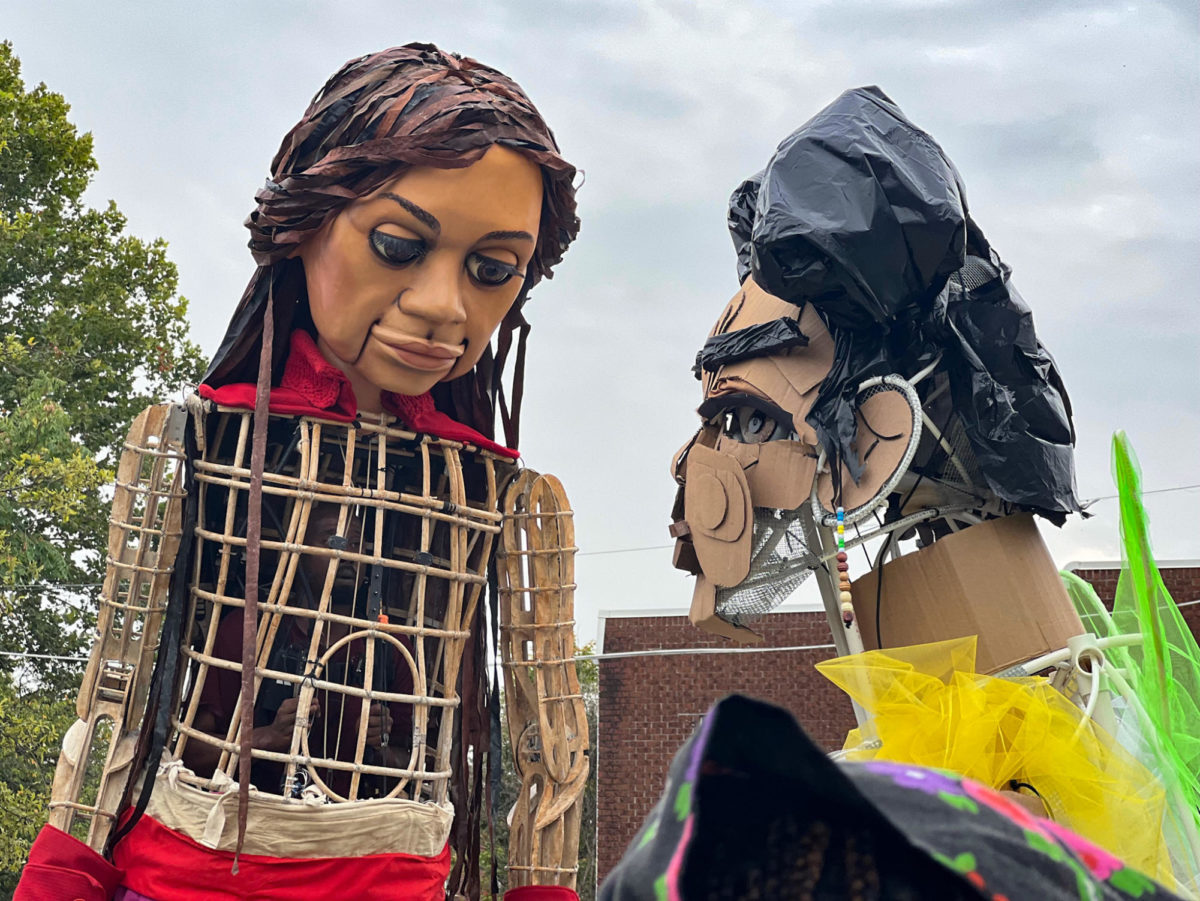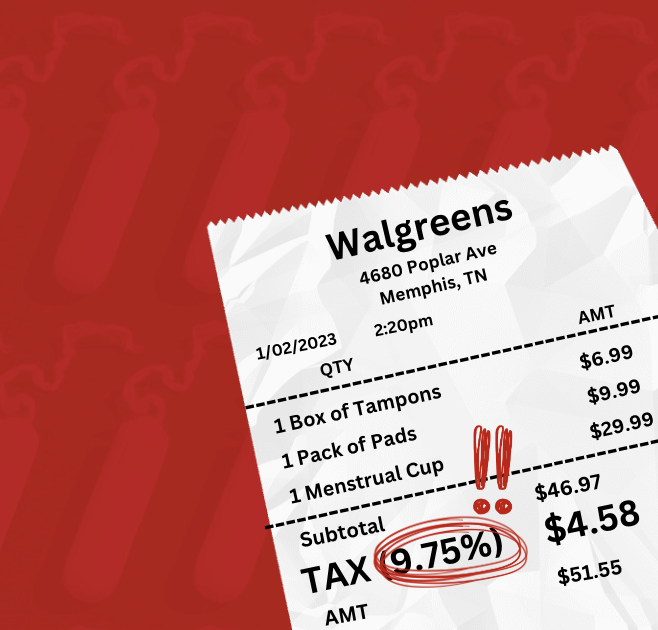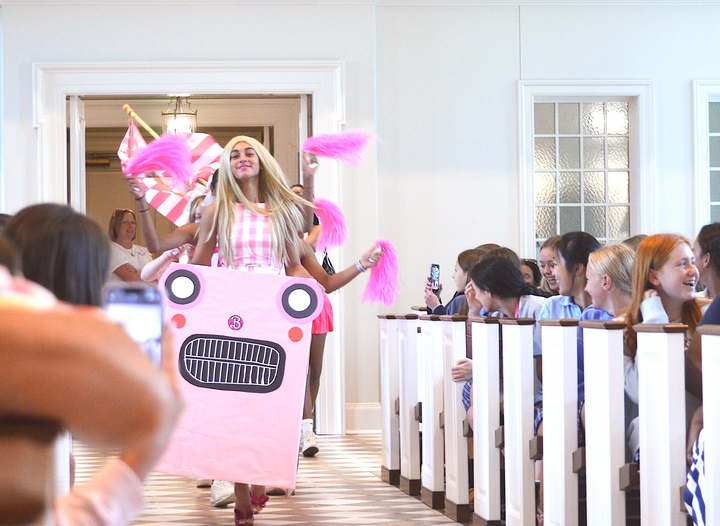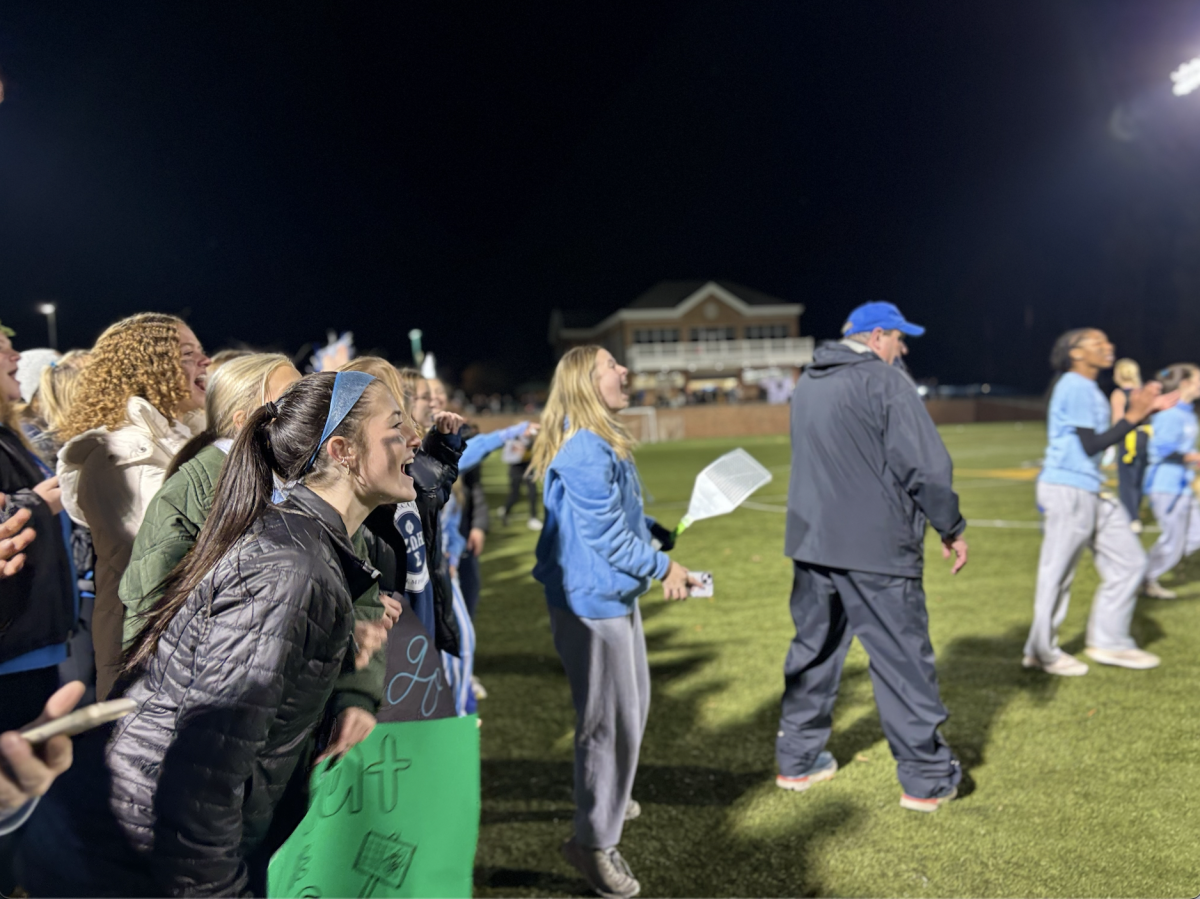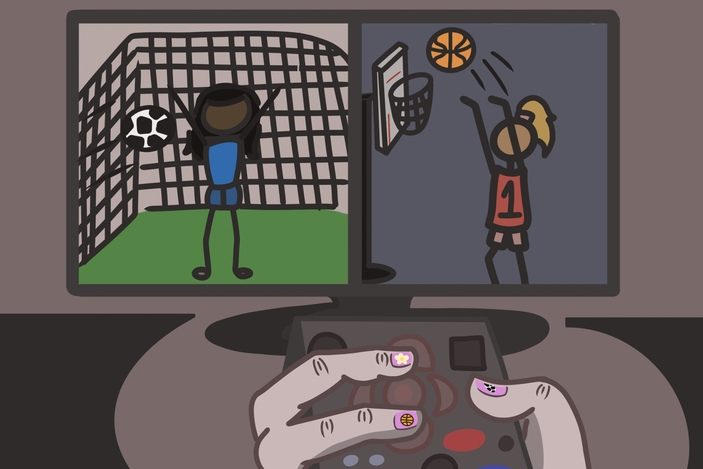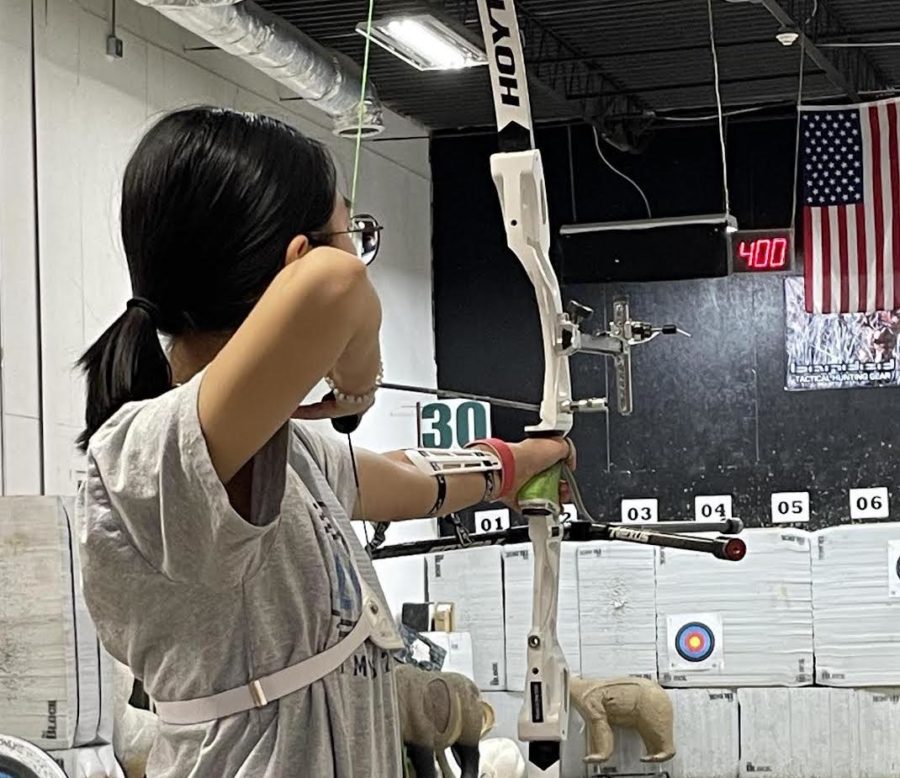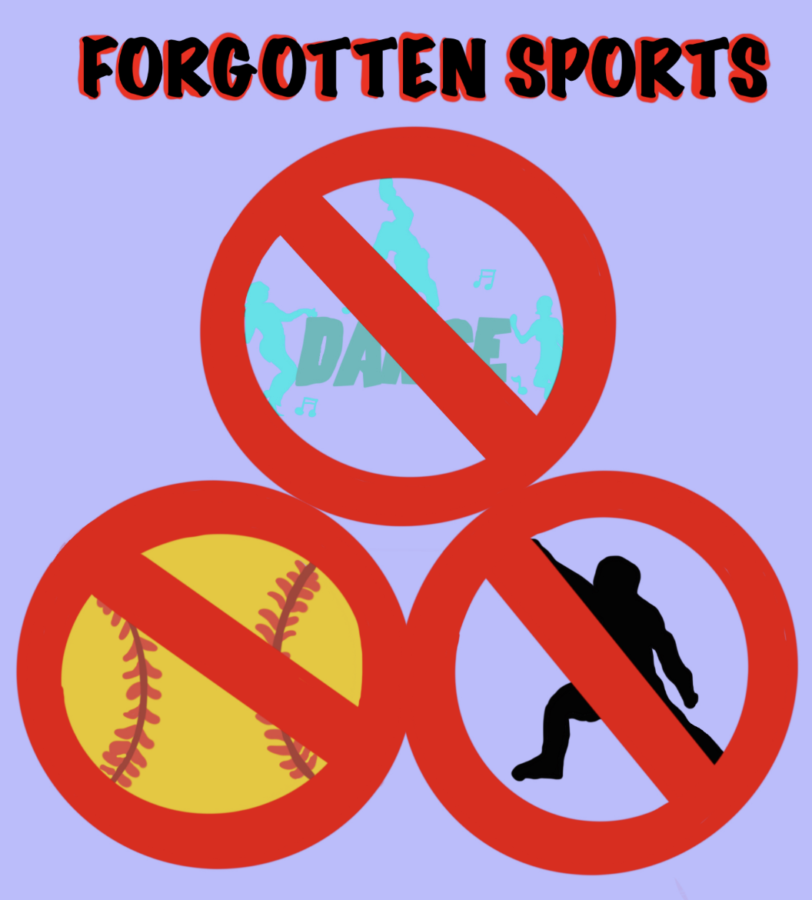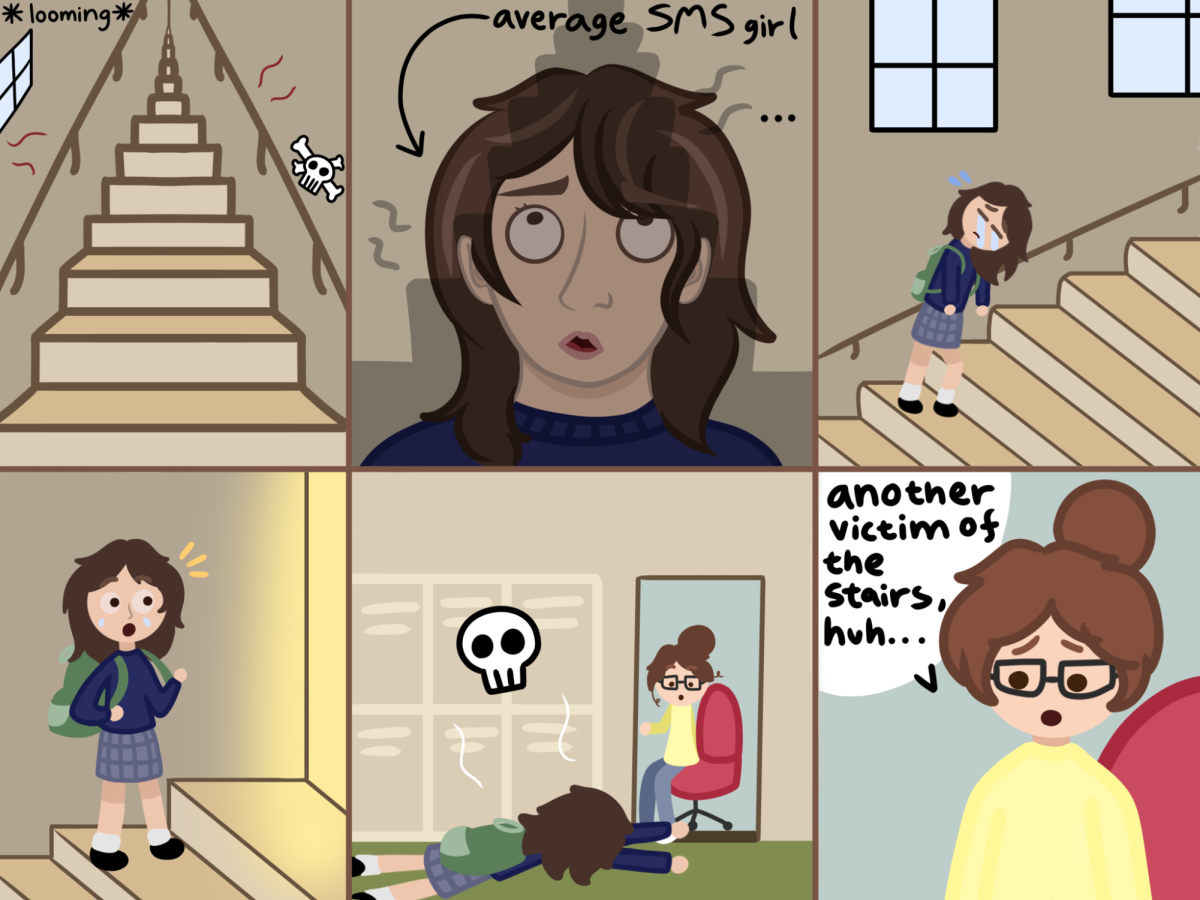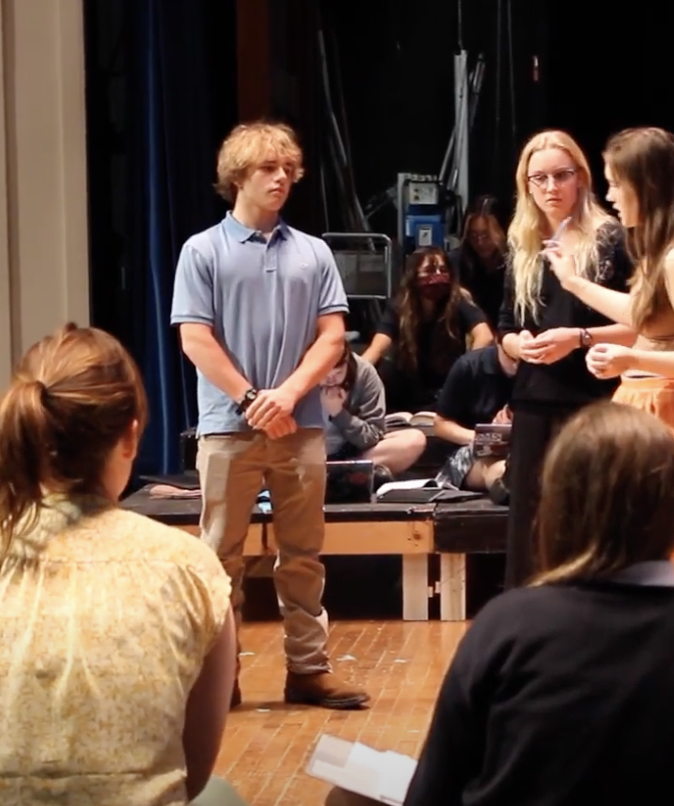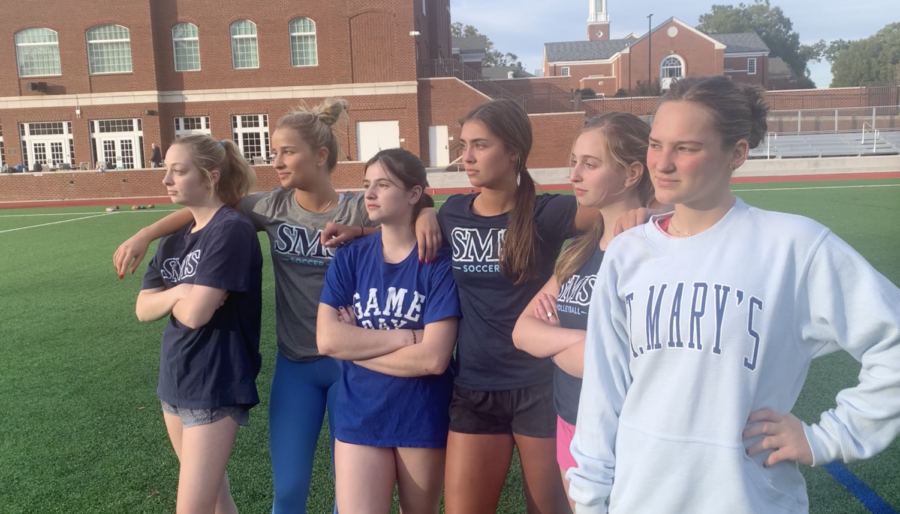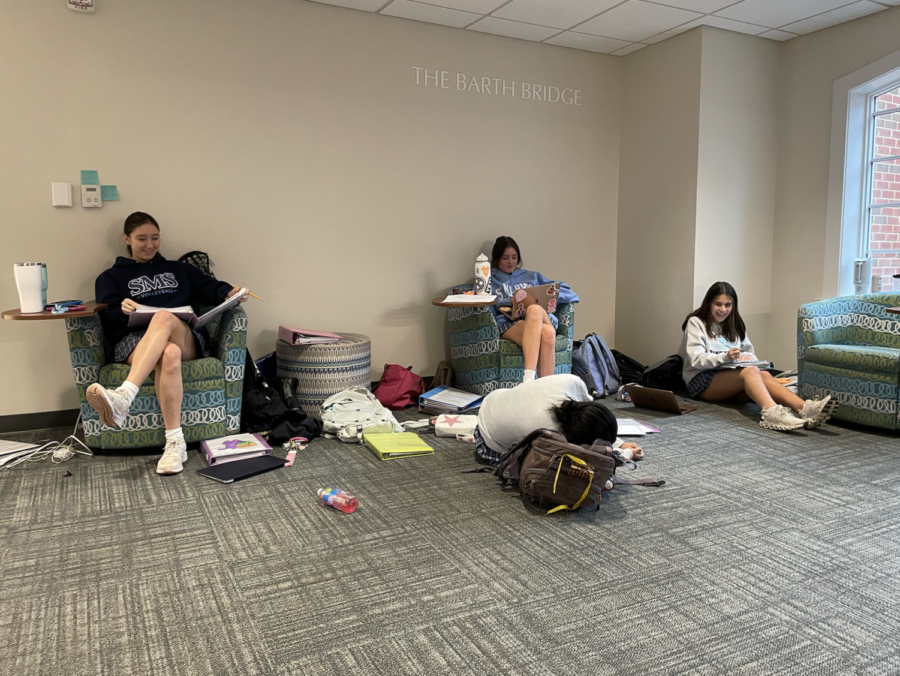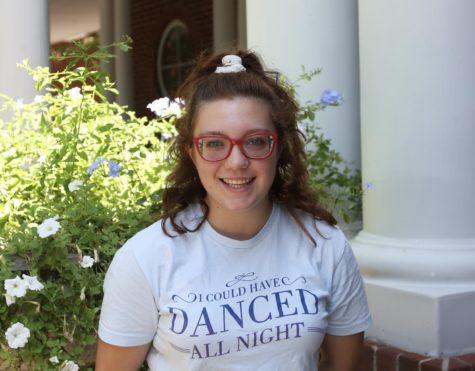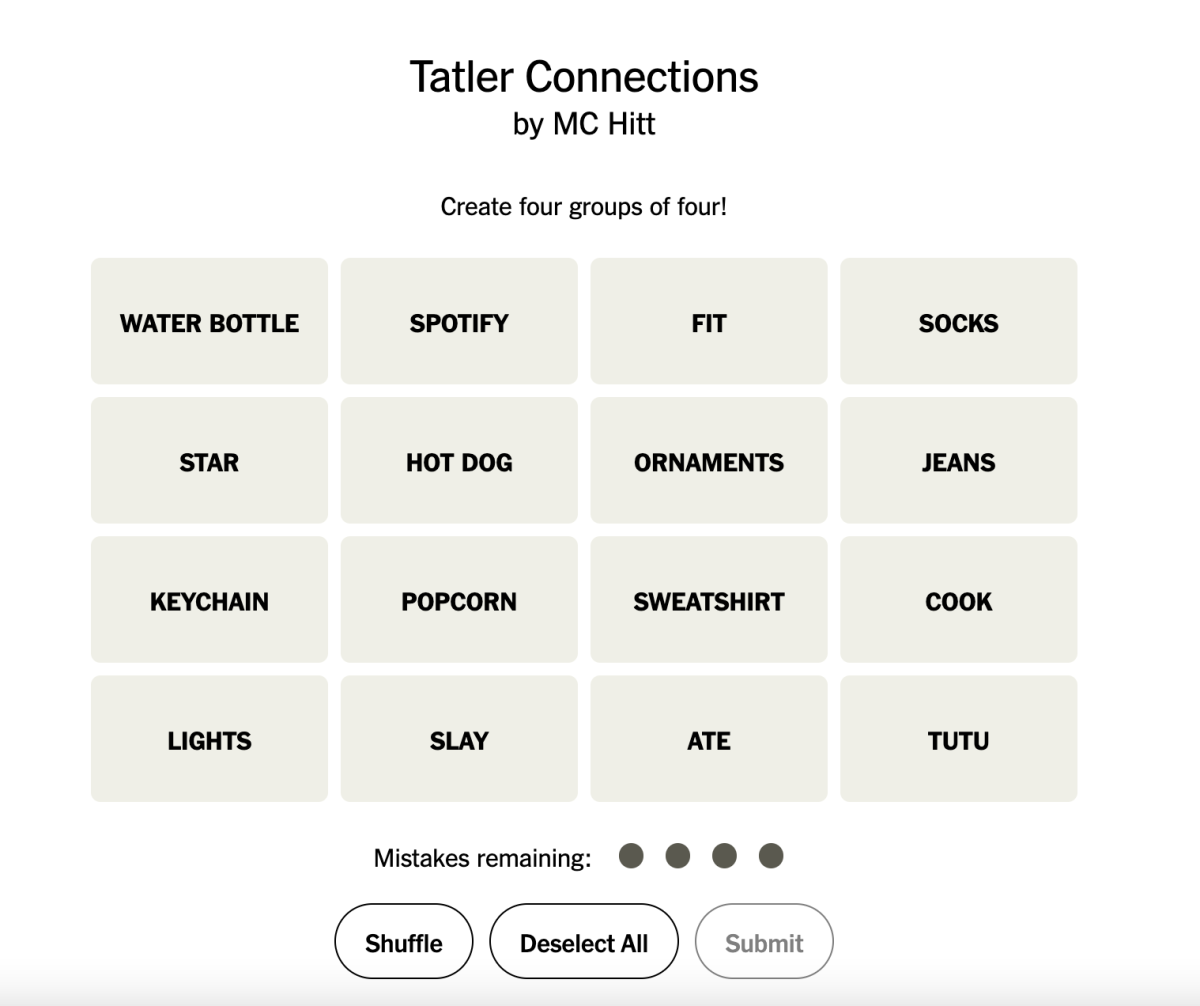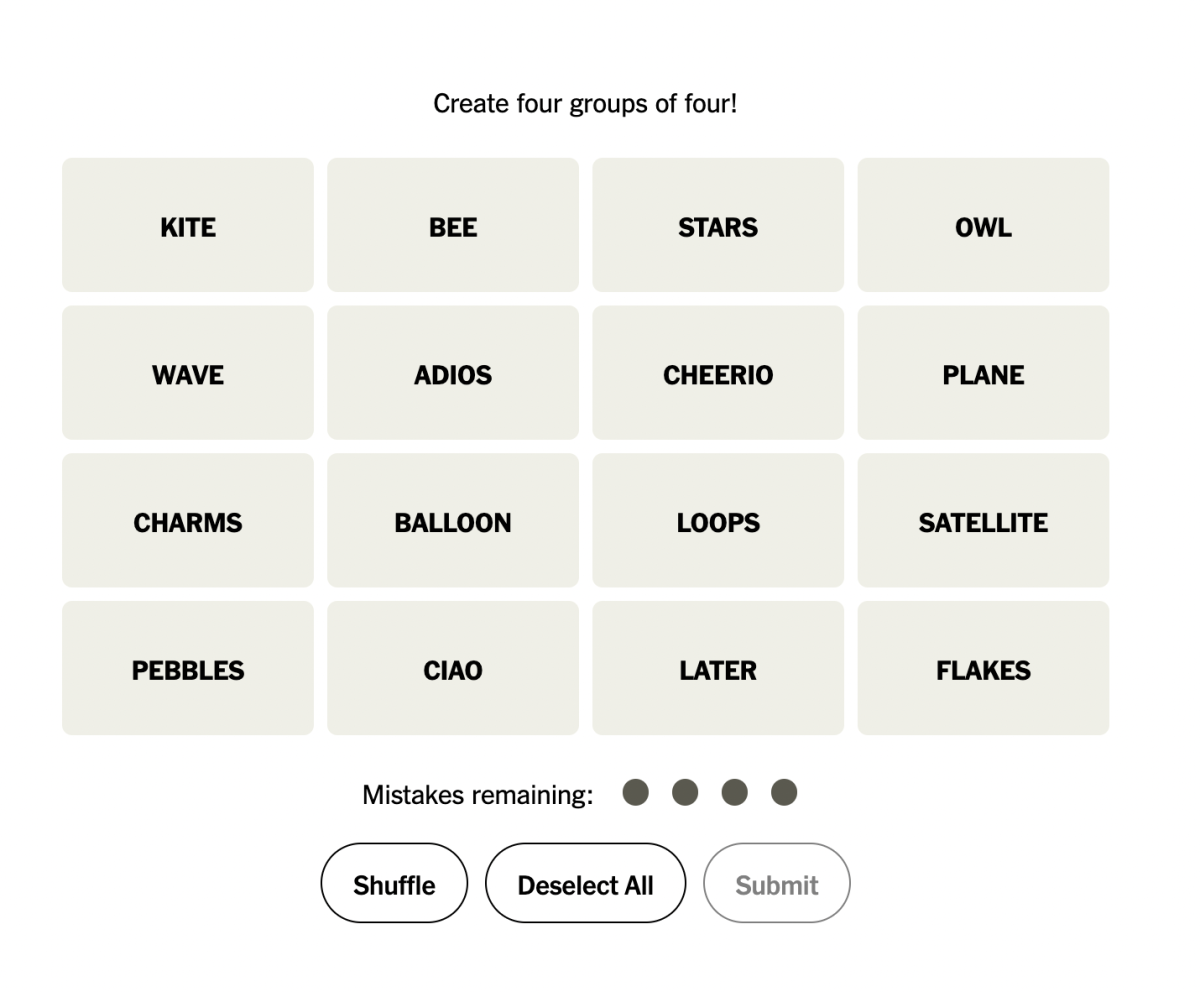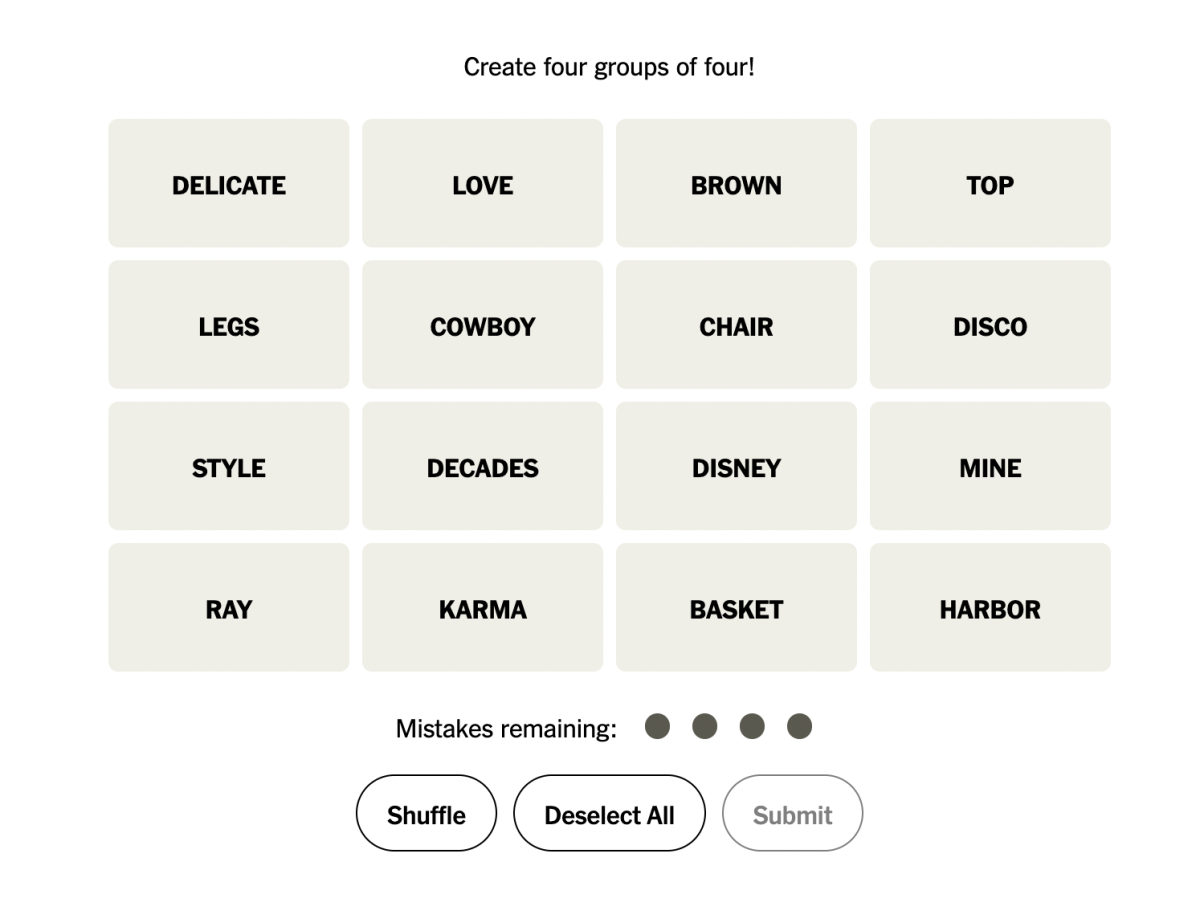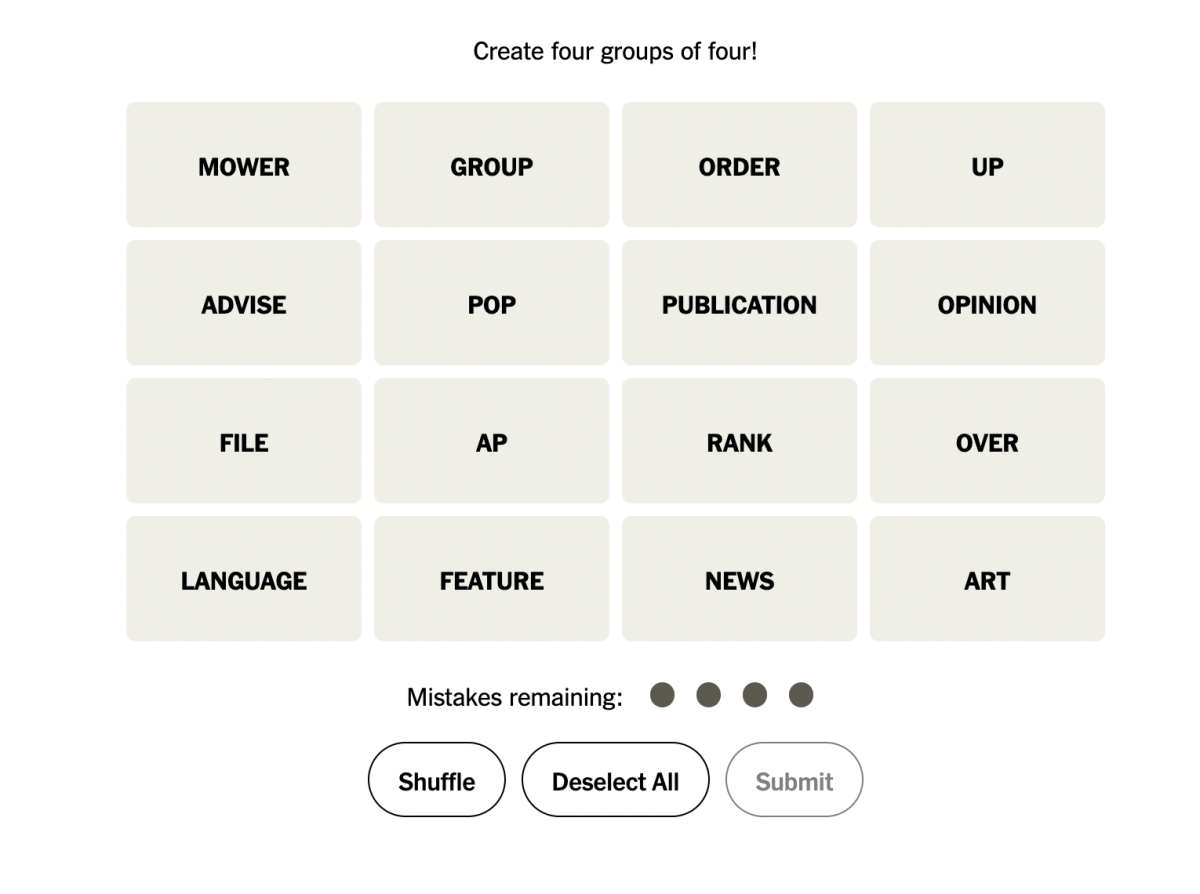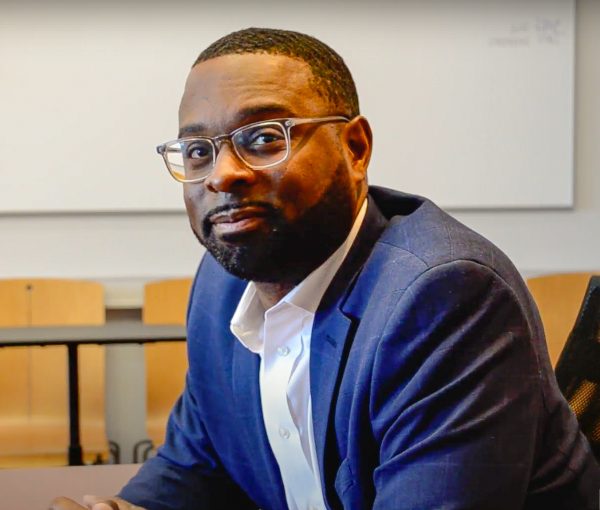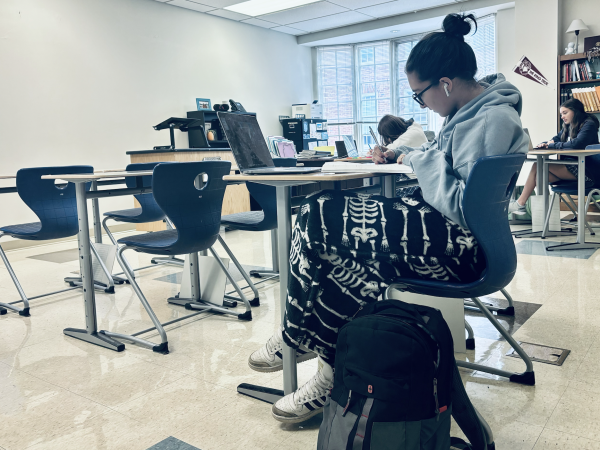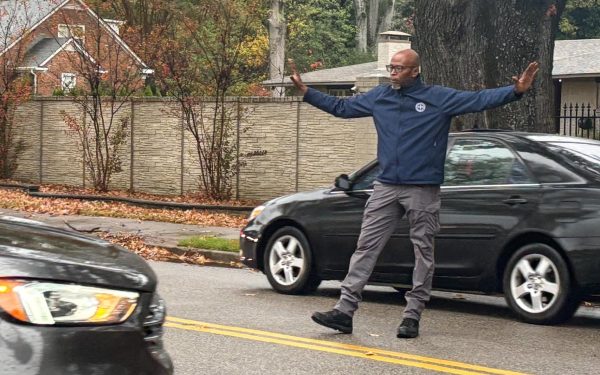Off the hook
Backpacks hit the floor, but the fire chief can explain
March 8, 2023
Walking down the hallway at the beginning of the school year, a person would see rows of backpacks hung onto hooks in the connector area from the AWC to the main school building. This is the junior commons, with a wall of hooks, a room of cubbies and a large seating area.
Walking down the hallway in the weeks after returning from Winter Break, a person might be surprised to find at the plethora of backpacks now littered about the hallways. They have left their hooks and made their ways into classrooms, hallways, the cafeteria, the library and other locations around St. Mary’s.
In January, Head of Upper School Ms. Lauren Rogers and Director of Operations Ms. Sarah Jenks announced that the hooks in the sophomore and junior commons that held the backpacks would be taken down.
The initial reaction from students was mostly negative, and even today some grumbling remains as sophomores and juniors continue to adjust to carrying their backpacks or leaving them on the floor.
Sydney Shanker (11) feels that an explanation was needed.
“I felt like they just announced it and there wasn’t any follow up,” Shanker said.
Tatler reached out to both Jenks and to the fire department to find out the reason behind the change.
“A wall of backpack hooks will not only cause issues for egress,” Jenks said. “But also backpack[s are] full of paper, which is kindling. That’s what burns fastest, so having it on a wall will accelerate a fire, which is why that new regulation [exists].”
Chief Fire Investigator LaPacus D. Faulkner (MS, CFO) said that limits and rules are crucial for a school to remain safe.
He explained every part of the school has been carefully studied, tested and regulated to make sure students are safe on a daily basis: from areas of refuge from fire in stairwells, to fire retardant spray, to exact calculations of how much of a fire load (something that would burn or accelerate a fire) can be in a room before it is too dangerous.
“I have school-age kids,” Chief Faulkner said. “I want to make sure the school they go to has a plan because if one kid isn’t accounted for that’s unacceptable. …We can go 20 years without something happening, but the one time something does happen, you don’t want that fire to spread real fast because of [something in the classrooms or unpreparedness]. That’s why we have limits.”
Jenks and Chief Faulkner also pointed out the importance of practice and procedure.
“As much of a pain as it is, I’m so glad our system is operating, and it detects these things. God forbid, it ever was a fire, the system is working exactly as it should,” Jenks said.
“When you’re not prepared, people do things they’ve never done before and get caught off guard,” Chief Faulkner said. “I want [students] to be confident, and I want them to be safe.”
Shanker clarified that she is able to understand the importance of these procedures.
“I want there to be rules,” Shanker said. “I understand [why the rules exist]. I just wish they would have told us what the fire [department] said”
If students do have questions on why certain rules and procedures exist that have not been answered by administration, Chief Faulkner said he wants students to know they can reach out.
“If it’s something you want [in school] and you think it’s an issue, you can always call our office and fire prevention,” Chief Faulkner said. “If you have a question…[an inspector] can always come by and tell you what to do.”
Along with calculus and Shakespeare, fire safety is and should be an integral part of any school’s curriculum. Students learn what to do in an emergency and how to evacuate from any building on campus. While it is unlikely you will experience a fire during your time at school, emergency preparedness is crucial to being able to act appropriately in situations when it will matter.
“When you were all in the third grade, you did timetables over and over again. After a while you stop thinking about three times three, you know it’s nine. You don’t think – you just see it and know it’s nine,” Chief Faulkner said. “So, we want to perform the drills monthly, so that when something happens it’s not everyone’s first time. It’s not everyone’s first time organizing outside, not the chief’s first time having accountability for everyone.”









